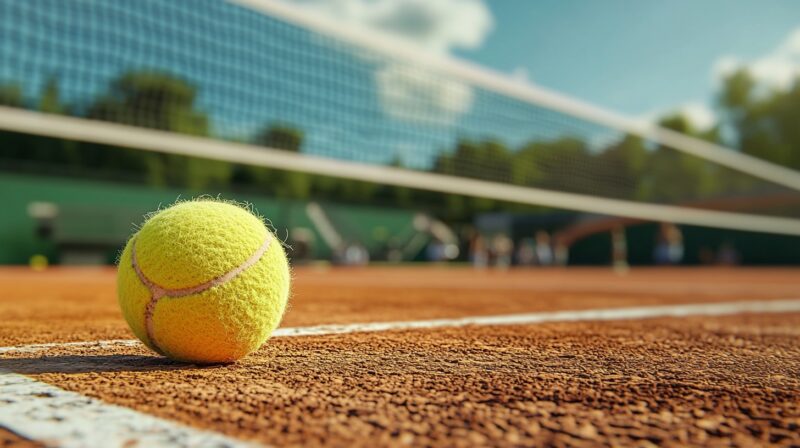Tennis is a physically demanding sport that requires endurance, agility, and power. After an intense match, your body may feel fatigued and sore, with muscles and joints needing recovery and relaxation. Recovery is an essential component of athletic performance, as it allows the body to repair itself and prepare for future challenges.
Understanding how to effectively relax and recover after a tennis match can help athletes maintain peak performance and reduce the risk of injury. By incorporating a combination of physical, mental, and nutritional strategies, you can optimize your recovery and enhance your overall well-being.
Why is massage therapy vital for recovery?
Massage therapy is a powerful tool for relaxation and recovery after a strenuous tennis match. Intense physical activity can lead to muscle tension, soreness, and inflammation, which can impact performance and increase the risk of injury.
Massage therapy addresses these issues by promoting blood circulation, reducing muscle tension, and enhancing the body’s natural healing processes. By applying targeted pressure and techniques, a skilled massage therapist can release tight knots and adhesions in the muscles, improving flexibility and reducing pain.
During a massage session, the therapist may use various techniques such as effleurage, petrissage, and deep tissue work to address specific areas of tension and discomfort. Effleurage involves long, gliding strokes that promote relaxation and enhance blood flow, while petrissage involves kneading and squeezing the muscles to release tension and improve mobility. Deep tissue work focuses on the deeper layers of muscle and fascia, providing relief for chronic pain and muscle tightness.
These techniques not only alleviate physical discomfort but also promote relaxation by reducing stress hormones and encouraging the release of endorphins, the body’s natural mood elevators.
As suggested by Makangs, by incorporating massage therapy, including Gyeongsan massage (경산마사지), into your post-match recovery routine, you can experience reduced muscle soreness, improved range of motion, and enhanced mental well-being, allowing you to return to the court refreshed and ready for your next challenge.

What you eat and drink will have a huge impact on your recovery
Hydration and nutrition are critical components of recovery, especially after an intense tennis match. Physical exertion during a match causes the body to lose fluids and electrolytes through sweat, leading to dehydration and fatigue. Replenishing these lost fluids is crucial for maintaining proper physiological function and promoting recovery.
Drinking water and electrolyte-rich beverages can help restore hydration levels and support muscle function, reducing the risk of cramps and fatigue. It is important to start hydrating immediately after the match and continue drinking fluids throughout the recovery period.
In addition to hydration, proper nutrition plays a vital role in repairing and rebuilding muscle tissues. Consuming a balanced meal or snack that includes carbohydrates, proteins, and healthy fats can provide the body with the nutrients it needs to recover effectively.
Carbohydrates replenish glycogen stores depleted during physical activity, while proteins supply the amino acids necessary for muscle repair and growth. Healthy fats, such as omega-3 fatty acids, can help reduce inflammation and support overall recovery. Incorporating antioxidant-rich foods, such as fruits and vegetables, can also combat oxidative stress and promote healing. By prioritizing hydration and nutrition, athletes can optimize their recovery and support long-term performance goals.
Focus on stretching and active recovery techniques

Stretching and active recovery techniques are essential for maintaining flexibility and preventing muscle imbalances after a tennis match. Intense physical activity can cause muscles to tighten and shorten, leading to stiffness and decreased range of motion.
Stretching exercises can help elongate the muscles, reduce tension, and improve flexibility, allowing athletes to move more freely and reduce the risk of injury. Incorporating both dynamic and static stretches into your recovery routine can target different muscle groups and address specific areas of tightness.
Dynamic stretching involves gentle, controlled movements that mimic the motions of the sport, helping to increase blood flow and prepare the muscles for future activity. This type of stretching is particularly beneficial for warming up before physical activity and promoting mobility.
Static stretching, on the other hand, involves holding stretches for an extended period, allowing the muscles to relax and lengthen. This type of stretching is ideal for cooling down after a match and reducing muscle soreness.
In addition to stretching, active recovery techniques such as yoga, Pilates, or light aerobic exercise can further support recovery and enhance flexibility. These activities promote circulation, reduce muscle stiffness, and improve balance and coordination, contributing to overall athletic performance. By incorporating stretching and active recovery into your post-match routine, you can improve flexibility, reduce muscle tension, and support long-term recovery goals.
Don’t forget to relax your mind as much as you relax your body
Recovery is not only about physical rejuvenation but also about mental relaxation and stress relief. Intense physical activity and competition can take a toll on mental well-being, leading to stress, anxiety, and burnout. Incorporating mental recovery and relaxation strategies into your routine can help athletes unwind, clear their minds, and prepare for future challenges.
Mindfulness and meditation practices can be effective tools for promoting mental relaxation and reducing stress. By focusing on the present moment and engaging in deep breathing exercises, athletes can calm their minds, reduce anxiety, and improve concentration. Guided imagery and visualization techniques can also help athletes mentally rehearse their performance, build confidence, and enhance motivation.
Quality sleep is another crucial component of mental recovery. Sleep is essential for cognitive function, memory consolidation, and emotional regulation, making it a vital part of any recovery plan. Establishing a consistent sleep routine, creating a relaxing bedtime environment, and limiting exposure to screens before bed can improve sleep quality and support overall recovery.
By prioritizing mental recovery and relaxation, athletes can enhance their well-being, improve focus, and maintain a healthy work-life balance.

Relaxing and recovering after an intense tennis match is essential for maintaining peak performance and supporting overall well-being. By incorporating a combination of massage therapy, hydration, nutrition, stretching, and mental relaxation strategies, athletes can optimize their recovery and reduce the risk of injury.
Understanding the importance of a holistic approach to recovery allows athletes to address both the physical and mental aspects of their well-being, ensuring they are prepared for future challenges on and off the court. By prioritizing relaxation and recovery, athletes can enhance their performance, achieve their goals, and enjoy a fulfilling and balanced athletic journey.
Also Read: Learn more about the rising tennis star, check out who Henry Searle is, the 2023 Junior Wimbledon Champion, here.

